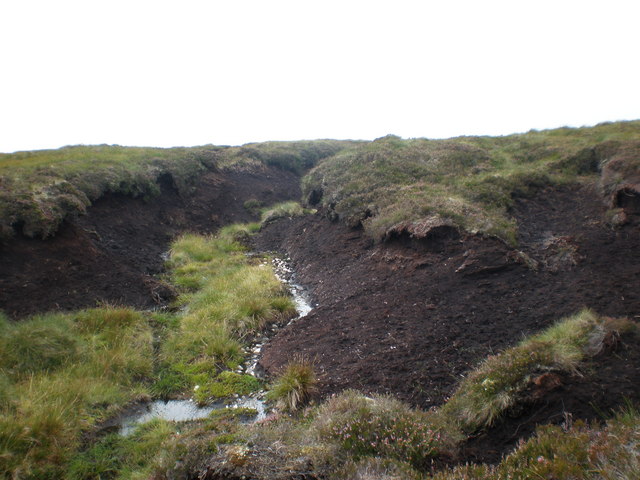
https://commons.wikimedia.org/w/index.php?curid=14170219
What is peat? Peat is a layer of partly decomposed organic matter on the surface of a soil. It has a high water content and a low oxygen content.
Accumulations of peat are called peatlands and they are found in 180 countries worldwide, in different quantities. The highest concentrations are in northern Europe, northern North America, and Indonesia. Peat forms in wetlands because for the organic matter to become peat, it must be waterlogged. They form in places with high rain, or where drainage is poor, or the water table is high.
Peat forms when plants decompose and aren’t able to quickly decompose. In most environments, when plants die, they fall to the ground and they are decomposed by bacteria, fungi, and other microorganisms. If the weather is warm, there is lots of oxygen, and the soil is moist, the plants will be decomposed in a few weeks. They can take longer if the conditions in the soil aren’t as good. The nutrients and minerals from the decomposed plants go back into the soil and they become food for other life. This doesn’t happen with peat.
In the case of peat, the soil where the plants die is waterlogged. The plants fall onto the soil, but the water prevents oxygen getting to them and the bacteria and other organisms can’t function without oxygen. The plants decompose, but very very slowly. At the same time, a moss called sphagnum moss starts to grow on the soil. It feeds on the soil and absorbs minerals, such as magnesium and calcium. Without these, the soil becomes slightly acidic. The moss can hold huge amounts of water and it keeps the surface of the soil wet. Sphagnum moss can hold 26 times its dry weight in water. The combination of the thick layer of moss on the surface cutting off oxygen to the soil and the slight acidity of the soil, all but halts decomposition of the dead plants under the moss. Sphagnum moss is known as peat moss or bog moss because it creates peat, but it can also spread, increasing the size of the peatlands.
When the sphagnum moss dies, it falls to the bottom and more moss starts to grow on top of it. The dead moss becomes dark brown, which is where the color of peat comes from. The moss on top of the peat dies and is replaced by new moss. This cycle repeats and the dead moss is slowly compacted down into peat soil. This is not a fast process and peat grows at a speed of about 1 mm per year. Peatlands take thousands of years to form. A 10 m deep peatland will have taken over 100,000 years to form.
Peat is able to hold huge amounts of carbon dioxide and it is a carbon sink. It is estimated that all of the peat in the world holds 550 gigatonnes of carbon, which is twice as much carbon as that stored in all of the trees on Earth, and all this while only covering 3% of the world’s area. The moss and the plants that die and fall into the peat have absorbed carbon dioxide from the atmosphere. When plants biodegrade, they release this carbon dioxide. Because the plants in peat don’t biodegrade, they keep hold of all that carbon dioxide.
People have used and still use peat for many different reasons. Peat was used for fuel for a long time. In Scotland, and some other northern countries, there are fewer trees because of the cold and the wind. Unable to burn wood, people realized that the high carbon content of dried peat meant that it burned very well. This burning peat is also responsible for some of the flavors of Scottish and Irish Whiskies. Peat was used as the fuel to smoke the malting barley, giving a peaty taste to a lot of the whiskies.
These days, though, a lot more work is being put into peat conservation. For a long time, it was assumed that peat is a renewable resource, but it is not. It would take over 10,000 years to regrow a 1 m piece of peat cut from the soil. Some whiskey tours allow people to dig up a piece of peat. The other worry is that when the peat is burned, it releases enormous amounts of carbon dioxide back into the atmosphere. Far more than would be release by burning wood and even more than is released by burning coal. We should protect our peat. And this is what I learned today.
Image By Sarah McGuire, CC BY-SA 2.0,
https://commons.wikimedia.org/w/index.php?curid=14170219
Sources
https://www.iucn-uk-peatlandprogramme.org/about-peatlands
https://en.wikipedia.org/wiki/Peat
https://en.wikipedia.org/wiki/Sphagnum
https://cdn.cyfoethnaturiol.cymru/media/694121/activity-plan-peat-get-set-accumulate.pdf
https://www.intechopen.com/chapters/62735
https://whiskymag.com/articles/the-problem-with-peat/
